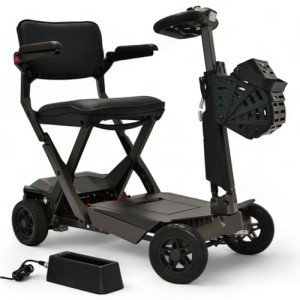A Comprehensive Guide to Buying a Mobility Scooter
Mobility scooters have ended up being an important tool for numerous people aiming to improve their independence and mobility. With a vast range of models and features offered, choosing the best mobility scooter can be daunting. This post supplies a useful guide to help consumers navigate their options, evaluate their needs, and make a notified purchase.
Understanding Mobility Scooters
Mobility scooters are electric automobiles created for individuals who experience mobility challenges. They are particularly useful for senior citizens, those with specials needs, or people recuperating from injuries. Mobility scooters can vary extensively in regards to style, functions, and pricing.
Types of Mobility Scooters
Before embarking on a purchase, it's vital to comprehend the various kinds of mobility scooters readily available:
Three-Wheel Scooters:
- Generally more maneuverable in tight spaces
- Lightweight and portable
- Perfect for indoor use
Four-Wheel Scooters:
- Offer greater stability and balance
- Suitable for outside use over different surfaces
- Generally have a longer battery life
Foldable/Portable Scooters:
- Designed to be quickly transported and saved
- Can typically fit in the trunk of a vehicle
- Perfect for those who travel often
Durable Scooters:
- Built to accommodate bigger people
- Typically included more robust functions for outdoor usage
- Typically equipped with larger batteries for prolonged variety
Elements to Consider When Buying a Mobility Scooter
1. Weight Capacity
Select a mobility scooter that can support the user's weight. Most scooters have a weight limitation ranging from 250 to 500 pounds. It is essential to guarantee that the scooter can accommodate the user comfortably.
2. Range and Battery Life
The range is how far the mobility scooter can take a trip on a single charge. Common ranges vary between 10 to 30 miles. Think about the user's everyday activities and choose a scooter with an ideal range.
3. Scooter Dimensions
Consider the size of the scooter, including its weight and dimensions. A more compact scooter might be perfect for narrow corridors and tight areas, while bigger models offer extra stability and convenience.
4. Terrain Capability
Examine where the scooter will primarily be utilized. If the user prepares to travel primarily on pavement, a lightweight design may be enough. However, if the user needs to pass through gravel or unequal surfaces, think about a four-wheel scooter built for off-road use.
Top Features to Look For
Comfort
- Adjustable Seats: Look for scooters with cushioned and height-adjustable seats to ensure comfort during travel.
- Armrests: These enhance security and assistance while browsing.
Safety and Visibility
- Headlights and Taillights: Essential for nighttime use.
- Turn Signals and Reflectors: Improve visibility and security while on the roadway.
User-Friendly Controls
- Joystick or Drive Controls: These should be user-friendly and easy to manipulate.
- Easy-to-Read Displays: A control board that reveals battery life, speed, and range can enhance the user experience.
Extra Features
- Storage Compartments: These use added benefit for carrying individual products while on the go.
- Weather condition Protection: Consider designs with rain covers or windshields if utilized in variable weather.
Expense Considerations
When budgeting for a mobility scooter, prices can vary anywhere from ₤ 500 to over ₤ 5,000 depending upon the design, functions, and brand. Extra costs might consist of:
- Extended Warranty: Protects versus problems and can conserve money in the long run.
- Devices: Optional features, such as updated seats, lights, or storage options.
| Feature | Expense Range |
|---|---|
| Basic Models | ₤ 500 - ₤ 1,500 |
| Mid-Range Models | ₤ 1,500 - ₤ 3,000 |
| High-End Models | ₤ 3,000 - ₤ 5,000 |
Funding Options
Lots of merchants use financing strategies, and some city government initiatives may offer grants or assistance for those in need. Examine potential monetary assistance with neighborhood resources or mobility service companies.
FAQs about Buying a Mobility Scooter
What is the difference between a mobility scooter and a wheelchair?
Mobility scooters are motorized and allow users to browse individually, while wheelchairs may require physical assistance or manual operation.
How do I maintain a mobility scooter?
Routine maintenance involves inspecting battery life, cleaning up the scooter, and inspecting tires and brakes. Constantly describe the user handbook for particular guidelines.
Can mobility scooters be used inside your home?
Yes, lots of models are designed for both indoor and outdoor use. However, three-wheel scooters tend to be much better matched for indoor navigation due to their tighter turning radius.
Are mobility scooters covered by insurance coverage?
Some insurance coverage plans cover a part of the costs for mobility scooters if they are considered clinically required. Contact your company for specific details.
How quick can a mobility scooter go?
Most mobility scooters have a maximum speed ranging from 4 to 8 mph. However, the proper rate may vary depending upon local guidelines.
Acquiring a mobility scooter can considerably enhance one's self-reliance and quality of life. By comprehending the types, functions, and costs associated with mobility scooters, prospective purchasers can make educated choices that match their requirements and choices. Customization and thorough research study are essential to ensuring fulfillment with this important investment.

